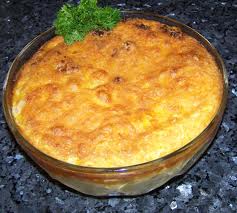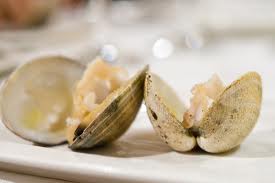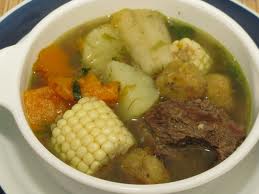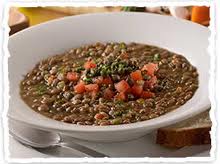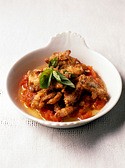 I know, you’re saying, “Frogs’ legs—what the f . . ..” Yes, kiddies, frog’s legs. That’s the recipe I want you to try. Now, hear me out. I admit, it’s most likely not your usual tidbit, and it’s mostly associated with hoity-toity French cuisine. Yet did you know that frog’s legs is a delicacy of Cantonese cooking, as well as Thai, Vietnamese, Portuguese, Spanish, Greek and Italian cuisine? Not to mention, it’s also popular in the southern regions of the U.S. In Indonesia it’s a national dish in the form of Swikee Kodok Oh, or frog’s legs soup usually served with rice. So, don’t get bummed out. It’s a favorite dish of a lot of people, not just our French brethren. Frog’s legs have a mild, enticing flavor similar to fish. They are also rich in protein, omega-3 fatty acids (the good kind), vitamin A and potassium. Figure it this way: the suckers are good for you.
I know, you’re saying, “Frogs’ legs—what the f . . ..” Yes, kiddies, frog’s legs. That’s the recipe I want you to try. Now, hear me out. I admit, it’s most likely not your usual tidbit, and it’s mostly associated with hoity-toity French cuisine. Yet did you know that frog’s legs is a delicacy of Cantonese cooking, as well as Thai, Vietnamese, Portuguese, Spanish, Greek and Italian cuisine? Not to mention, it’s also popular in the southern regions of the U.S. In Indonesia it’s a national dish in the form of Swikee Kodok Oh, or frog’s legs soup usually served with rice. So, don’t get bummed out. It’s a favorite dish of a lot of people, not just our French brethren. Frog’s legs have a mild, enticing flavor similar to fish. They are also rich in protein, omega-3 fatty acids (the good kind), vitamin A and potassium. Figure it this way: the suckers are good for you.
The historical record shows that frogs’ legs were popular in southern China as early as the first century of the Common Era. The Aztecs also had a yen for them. But, ironically, it was the Catholic Church that made them a staple in France. Early on, the church had a prohibition on eating meat on a certain number of days during the year, the most common being Friday. Gluttonous monks in France got around this by qualifying the frog as a fish, and not as a meat item. Naturally, since frogs grew wild during that time, hungry peasants got into the act by dutifully following the monk’s (and the Church’s example) and eating the frogs. And a national dish was born. They became so endemic with French cuisine that the favorite insult toward the French is referring to them as the Frogs.
The dish crossed the Atlantic by way of Louisiana, where the French speaking Cajun folk popularized it in New Orleans. And to this day they still enjoy it either deep-fried, sometimes breaded and sometimes not. Now, don’t get turned-off by it. Check out the recipe. Give it a chance. It might surprise you. Where can you get frog’ legs? Well, at most large supermarkets these days (most often in the seafood section). Barring that, at specialty food stores, and even on-line. They are usually sold frozen and already cleaned. Most Asian markets carry them, sometimes even fresh. For the more adventurous, you cay buy whole bullfrogs that can be cleaned and skinned at home. If you manage to get these, you can trim off the skin as if you were sliding off a glove from the legs. Then soak the legs in cold water for 2 hours before cooking to mellow out the flavor.
For the recipe given, you can use farmed or wild frog legs. Farmed legs tend to have a lighter hue, whereas their wild cousins have a richer, gamier taste. Most frogs’ legs are roughly the size of a small chicken wing. In all cases they should be plump and have a nice pink color.
FROGS’ LEGS PROVENCALE
12 large pairs of 24 small pairs frog’s legs
Cold milk to cover (whole or 2%)
1 can (1lb. 12oz) crushed tomatoes
2 cloves garlic, peeled and finely minced
Flour for dredging frogs’ legs
1/4 teaspoon dried oregano
Salt and freshly ground black pepper to taste
1/2 cup vegetable or corn oil
1/2 stick butter
1/4 cup finely chopped parsley
1. You need to keep the frogs’ legs flat as they cook. This is done by inserting one leg in between the two muscles of the lower part of the other leg.
2. Place the legs in a bowl and add cold milk to barely cover.
3. Place the tomatoes, undrained, in a small saucepan. Stir in the garlic and bring to a boil. Lower heat and simmer for 20 minutes. Remove from heat and set aside.
4. Meanwhile, blend the flour with the oregano, and salt and pepper to taste. Remove one pair of legs at a time from the milk and dredge in flour, turning to coat well.
5. Heat oil in a large skillet or fry pan, add butter and, when it is quite hot, add the legs. Cook until golden on one side. Turn and cook until golden on the other side.
6. Transfer the legs to a serving dish and arrange them neatly in one layer.
7. Quickly heat the tomato sauce and spoon it over the legs. Sprinkle with the chopped parsley and serve with a crusty loaf of bread.
Yield: 4 servings.
 One of my all time favorite dishes is Shish Kabob (or Shish Kabab). Whether it’s Middle Eastern, Arabic or Israeli, I love the suckers. I make them with lamb, beef or poultry; in sandwiches, pita bread, or over rice pilaf or steamed white rice. But what do you do if you’re a vegetarian? Well, you can make veggie kebobs. That’s right, veggie style. And just the same way as you would prepare regular shish kebob.
One of my all time favorite dishes is Shish Kabob (or Shish Kabab). Whether it’s Middle Eastern, Arabic or Israeli, I love the suckers. I make them with lamb, beef or poultry; in sandwiches, pita bread, or over rice pilaf or steamed white rice. But what do you do if you’re a vegetarian? Well, you can make veggie kebobs. That’s right, veggie style. And just the same way as you would prepare regular shish kebob.


